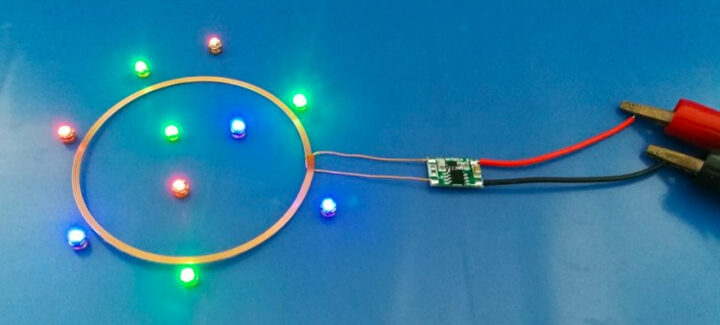Wireless power, no matter how inefficient it may be, sounds good and even looks good with the “5V remote wireless power supply LED pack” we feature in this post. It also feels magical with the LEDs lighting up thanks to magnetic resonance coupling technology.
The solution comes with a coil as a transmitter and each LED bead also includes a small coil as a receiver. When the two are coupled, energy can be transferred from the transmitter to the receiver through the air, paper, or plastic casing, and the LEDs will light up.
The magnetic field intensity in this technology is said to be similar to that of the Earth’s magnetic field, and it will not be harmful to human health and other devices.
Specifications:
- Transmitter Module Input Voltage – 5 V
- Power – 0.5W (10 LEDs)
- Transmitting Coil Outer Diameter – 70mm, inner diameter 65mm, thickness 0.5mm
- Transmitter Board Size – length 16mm, width 12mm, thickness 2.5mm
- Outer Diameter of LED Receiver: – 4.3mm
- Sensing Distance – 0 to 80 mm
- LEDs – 10x (2x red, 2x white, 2x green, 2x blue, 2x yellow)
- Working Principle – magnetic resonance coupling technology
Adafruit had a similar kit that was reviewed by “Adam Savage’s Tested”, so you see how the system actually works.
DFRobot is selling the kit for $9.90 with 10 wireless LED’s and the transmitting coil.

Jean-Luc started CNX Software in 2010 as a part-time endeavor, before quitting his job as a software engineering manager, and starting to write daily news, and reviews full time later in 2011.
Support CNX Software! Donate via cryptocurrencies, become a Patron on Patreon, or purchase goods on Amazon or Aliexpress





